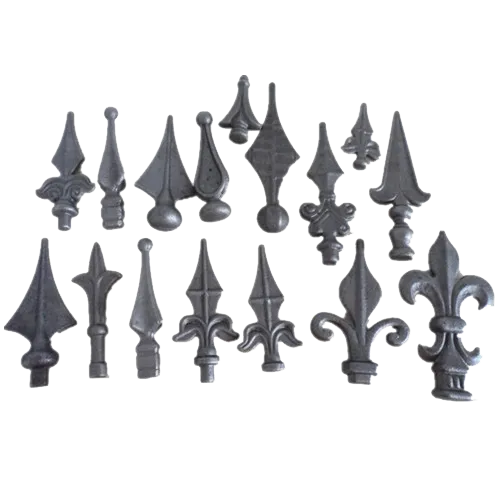Mobile:+86-311-808-126-83
Email:info@ydcastings.com
sand casting vs die casting
Sand Casting vs. Die Casting A Comprehensive Comparison
When it comes to shaping metal into complex forms, two of the most widely used manufacturing processes are sand casting and die casting. Each method has its unique advantages, disadvantages, and applications, making them suitable for different projects and industries. In this article, we will explore the fundamental differences between sand casting and die casting, along with their respective benefits and limitations.
What is Sand Casting?
Sand casting is one of the oldest manufacturing processes known to humanity. It involves creating a mold using sand, which is compacted around a pattern made of metal, plastic, or wood. Once the mold is formed, molten metal is poured into the cavity and allowed to solidify. After cooling, the sand mold is broken away to reveal the cast part.
Advantages of Sand Casting
1. Versatility Sand casting can accommodate a wide range of metal alloys, including iron, aluminum, and bronze, making it suitable for various applications. 2. Cost-Effectiveness The materials required for sand casting—primarily sand, which is abundant and inexpensive—make it a cost-effective choice, especially for small to medium production runs.
3. Complex Geometries Sand casting can produce intricate designs that are difficult to achieve with other manufacturing techniques. The process allows for the creation of complex shapes and features, which is particularly advantageous for specialized applications.
4. Ideal for Large Parts Sand casting is well-suited for casting large components, such as engine blocks and heavy machinery parts. The dimension limits are less stringent compared to die casting.
Disadvantages of Sand Casting
1. Surface Finish Sand cast parts may have a rough surface finish compared to products made with other methods, which can require additional machining for a smoother finish.
2. Dimensional Accuracy Sand casting generally provides less precision than die casting. The tolerances are larger, which may not be suitable for applications requiring high precision.
What is Die Casting?
sand casting vs die casting

Die casting is a manufacturing process in which molten metal is injected into a steel mold, or die, under high pressure. Once the metal cools and solidifies, the mold opens, and the finished part is ejected. Die casting is often used for producing high-volume parts.
Advantages of Die Casting
1. High Precision Die casting is renowned for its dimensional accuracy. Parts produced through this method can achieve tight tolerances and consistent quality.
2. Excellent Surface Finish The high-pressure injection process results in a smoother surface finish, often requiring little to no further machining or processing.
3. Efficiency in High Volumes Once the mold is created, die casting can produce thousands of identical parts quickly, making it ideal for large-scale manufacturing.
4. Automated Process Die casting can be easily automated, reducing labor costs and increasing production speed.
Disadvantages of Die Casting
1. High Initial Costs The creation of steel dies is expensive, and the high upfront costs may not be justifiable for small production runs. This makes die casting more suitable for high-volume production.
2. Material Limitations Die casting is primarily used for non-ferrous metals such as aluminum, zinc, and magnesium. It is not suitable for all metal types, particularly ferrous alloys.
3. Design Restrictions The design of the part must account for the mold and the need for draft angles for easy extraction. This can limit design complexity compared to sand casting.
Conclusion
Choosing between sand casting and die casting ultimately depends on specific project requirements, including the desired material, production volume, surface finish, and dimensional accuracy. Sand casting is a flexible and cost-effective option for larger parts and intricate designs, while die casting excels in high-precision, high-volume applications. Understanding the strengths and limits of each process allows manufacturers to make informed decisions that best meet their production needs. As technology continues to evolve, both methods will likely see innovations to improve efficiency and capabilities, further enhancing their roles in the manufacturing sector.
-
Why Should You Invest in Superior Pump Castings for Your Equipment?NewsJun.09,2025
-
Unlock Performance Potential with Stainless Impellers and Aluminum End CapsNewsJun.09,2025
-
Revolutionize Your Machinery with Superior Cast Iron and Aluminum ComponentsNewsJun.09,2025
-
Revolutionize Fluid Dynamics with Premium Pump ComponentsNewsJun.09,2025
-
Optimizing Industrial Systems with Essential Valve ComponentsNewsJun.09,2025
-
Elevate Grid Efficiency with High-Precision Power CastingsNewsJun.09,2025











